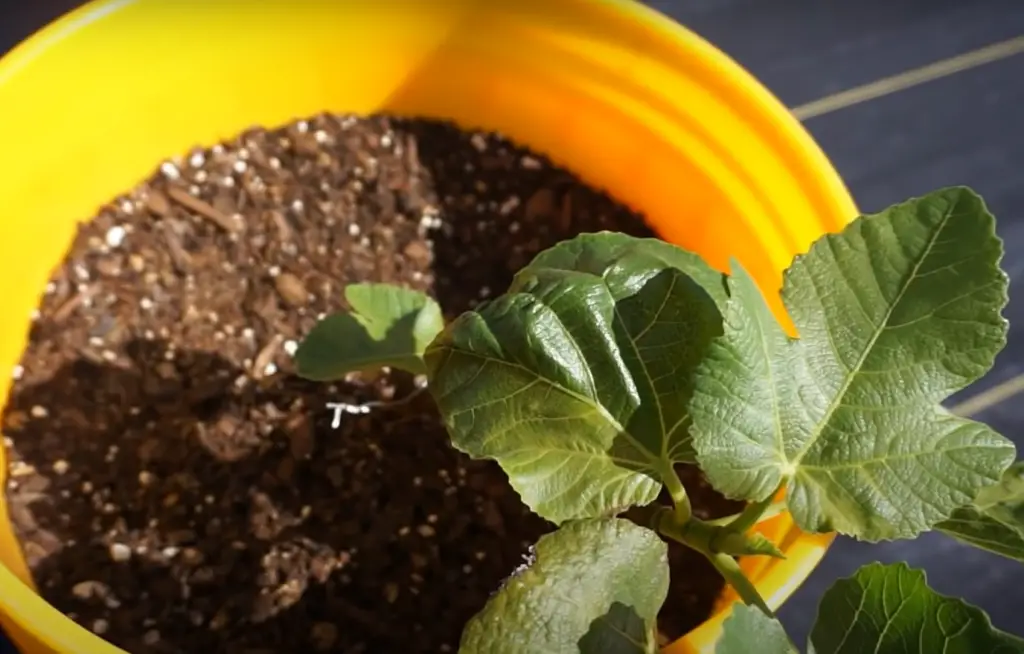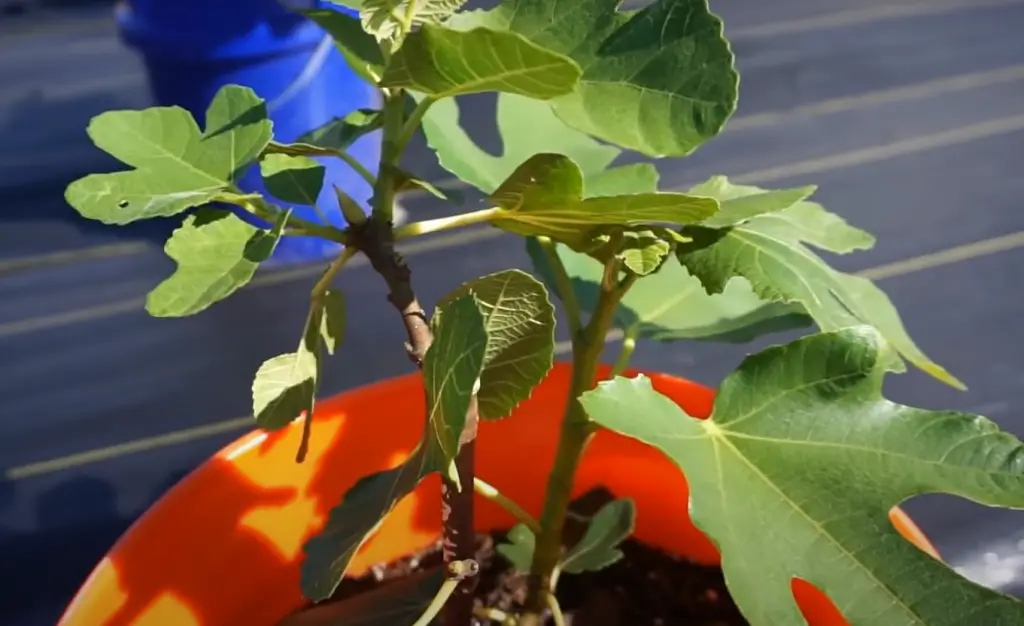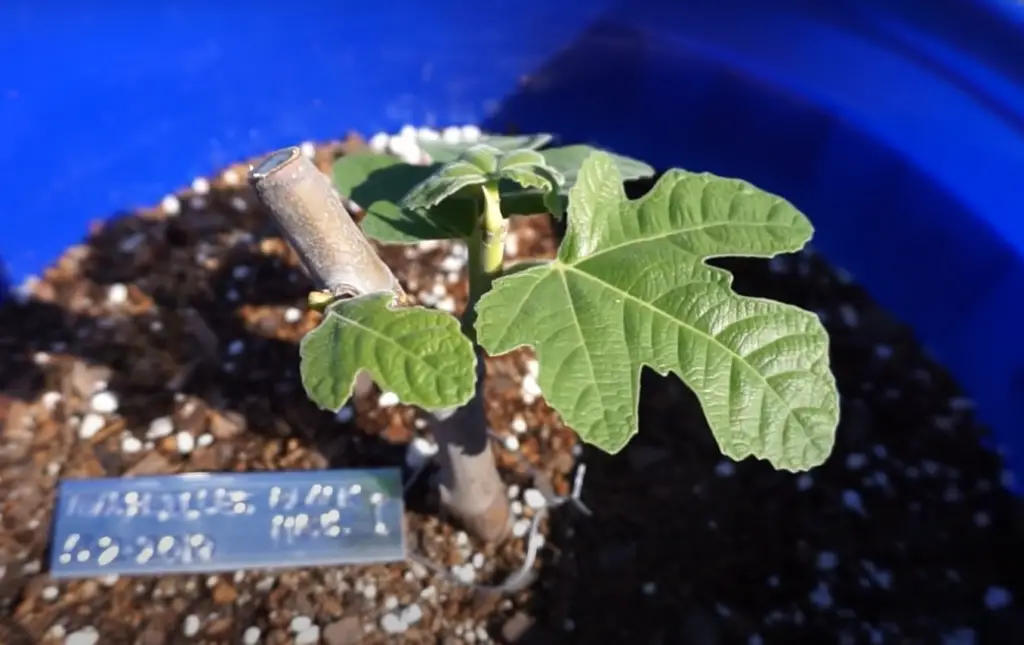Weeds That Look Like Small Trees are a common problem in many gardens, and it is not always easy to identify them. Weeds can be difficult to control, as they spread quickly and can take over an area if left unchecked. In this article, we will look at some of the most common weeds that resemble small trees and provide practical advice on how to tackle them. We will also answer some frequently asked questions about these weeds and provide useful tips on how to prevent their growth in the future.
Creeping thistle
Creeping thistle is a perennial weed that can reach up to two metres in height. It has long, spiny stems and usually grows in patches or clumps of several plants. The leaves are deeply divided into lobed segments and have white-tipped spines along their edges. This weed spreads by seed and root, so it’s important to remove the whole patch to prevent it from coming back. To do this, dig out the entire root system and dispose of it in an appropriate manner.[1]
White mulberry
White mulberry is a common weed in gardens and landscapes, and it can quickly take over an area if left unchecked. It grows from underground roots that spread out rapidly, producing multiple trunks and branches that resemble small trees.

The leaves of white mulberry are broad and heart-shaped, with serrated edges. The bark is smooth and greyish-brown in color. White mulberry has small, greenish-white flowers in the spring and red fruits that are edible but not very tasty.
To control white mulberry, you should dig up as much of the root system as possible. It is also important to remove any seedlings before they have a chance to mature. If this proves difficult, you can use an herbicide to kill the weeds.
Black locust
Black locust is a weed that often resembles small trees, and it is one of the most common weeds found in North America.
The leaves are thick and have compound leaflets with darker edges. Its flowers are white or pinkish in color and are clustered at the ends of its branches. Black locust is a fast-growing weed, and it can quickly take over an area if left unchecked.Ricinus communis (Castor Bean)
The Ricinus communis, also known as the castor bean plant, is a particularly nasty weed that grows in many gardens and can easily be mistaken for a small tree. This plant has large-leaved foliage with pointed tips that can reach up to three feet tall. The leaves are deep green on the top and light green on the underside. These plants produce bean-like seed pods that contain a toxic substance and are best avoided.
Norway maple
Norway maple (Acer platanoides) is a large deciduous tree that is native to northern Europe and parts of Asia. It has been widely planted in North America as an ornamental tree, but it can become invasive if not managed correctly. Norway maple typically grows to between 30-50 feet tall with a dense crown. Its leaves are five-lobed, dark green in summer and yellowish-brown in fall.
Hybrid poplar trees
Hybrid poplar trees are a type of weed that resemble small trees and can be difficult to distinguish from other plants. They have multiple stems, bark like a tree and can grow up to 6-7 metres in height. These weeds spread quickly by sending out underground roots which then form new stems and leaves. To identify hybrid poplars, look for their distinctive leaves – they are usually ovate with pointed tips and have serrated edges.[1]
Willow trees
Willow trees are one of the most common types of weeds that look like small trees. They grow rapidly and can be difficult to remove due to their shallow root systems. They often appear in moist, marshy areas and can spread quickly if not controlled. The best way to get rid of willow trees is by using an herbicide or digging them up with a shovel. Make sure to wear gloves and protective eyewear when handling them as their sap can be quite irritating.[2]
Elm trees
Elm trees are another type of weed that look like small trees.

They tend to grow in wet, marshy areas and can become invasive if left unchecked. The best way to get rid of elm trees is by using an herbicide or by cutting them down with a chainsaw. Make sure to wear protective gear such as long pants, boots, and gloves when handling these trees as their sap can be irritating to the skin.[2]
Southern magnolia
The Southern magnolia is a popular ornamental tree that originated in the South and has become widely naturalized across North America. It looks like a small tree with its broad, leathery leaves, but it is actually an evergreen shrub. The Southern magnolia can be tricky to distinguish from other weeds that look similar, so make sure to examine the flower buds, which are white and cup-shaped. It also produces a red cone-like fruit that ripens in the fall.
Sumac (Rhus spp.)
Sumac is a type of shrub that can spread rapidly and take over an area. It has clusters of small, red-purple fruits and its leaves are divided into multiple leaflets.
To control sumac, it is important to remove the root system as this prevents new stems from growing. Hand-pulling or mowing can also be used to control sumac, but it will need to be repeated regularly as the shrub quickly regenerates from its root system.Tree-of-Heaven (Ailanthus altissima)
Tree-of-Heaven is an invasive weed that is native to China and has spread throughout the United States. It can reach heights of 30 feet with multiple trunks, and its leaves have a compound shape resembling that of a maple tree. The bark of the Tree-of-Heaven is grayish brown and has distinctive ridges. This weed reproduces quickly, and its seeds can be dispersed by wind or animals.
To control Tree-of-Heaven, you can hand-pull young plants and shallowly dig up larger ones. It is also important to remove the seedpods from mature plants to prevent them from spreading. Herbicides such as glyphosate can also be used, but careful application is essential as it can damage other plants.
Golden Rain Tree (Koelreuteria paniculata)
The Golden Rain Tree is a common weed that looks like a small tree. It has multiple trunks, with yellow flowers blooming in the summer and red seedpods appearing later in the season. The leaves are pinnate, meaning they have several leaflets growing from one single stem. This weed is often found growing along roadsides and near buildings, where it can quickly take over an area. It is important to keep it under control, as it can become a nuisance if left unchecked.[1]
Siberian Elm (Ulmus pumila)
One of the most common weeds that looks like a small tree is the Siberian Elm (Ulmus pumila). This weed is native to Asia and has now spread across many parts of North America. It grows in clumps, with its branches spreading up to 20 feet long. Its leaves are usually oval-shaped and have serrated margins. The bark is rough and gray in color.
The Siberian Elm can spread by seed, so it is important to remove the seedlings as soon as they appear. The best way to control this weed is through mechanical removal of its roots or using herbicides. Hand-pulling or digging up the plant can be effective, but it may take several attempts to completely get rid of the plant.
Groundsel (Senecio vulgaris)
Another weed that looks like a small tree is the Groundsel (Senecio vulgaris). This weed is native to Europe and can be found in many parts of North America. It grows in clumps, with its branches spreading up to 6 feet long. Its leaves are usually rounded or oval-shaped and they have a scalloped edge. The bark is light gray in color and has a rough texture.

To prevent the spread of groundsel, it is crucial to eliminate any emerging seedlings. The most effective methods for weed control involve mechanical removal of the roots or the application of herbicides. While hand-pulling or digging up the plant can be effective, it may require multiple attempts to completely eradicate it.[1]
Japanese Knotweed (Fallopia japonica)
This invasive weed is one of the most difficult to eradicate, and it can easily overpower other plants. It has bamboo-like stems with leaves up to 15 cm long. Japanese knotweed can grow up to 3 m tall if left unchecked. The roots can reach down several metres deep and are very hardy, meaning they are difficult to remove fully from the soil.
Buckthorn (Rhamnus cathartica)
Buckthorn is a shrub-like weed found in many gardens. It has dark green leaves and small, black berries that are toxic if eaten. The leaves can be up to 4 inches long and have sawtooth edges. Although it resembles a small tree, buckthorn will not get taller than 10 feet in height.[2]
Privet (Ligustrum spp.)
Privet is a broadleaf, evergreen weed that often looks like a small tree. It grows in dense clusters and can reach heights of up to 12 feet tall. Privet has dark green leaves with white flowers in the summertime. It spreads quickly and can take over an area if not managed properly.
One of the most effective ways to control the spread of Privet is to cut it down. This should be done in the late winter or early spring, when the plant has gone dormant. It is important to remove all of the roots and stems, as this will prevent them from sprouting again.[2]
Japanese Honeysuckle (Lonicera japonica)
Japanese Honeysuckle is a woody, vining weed that can reach heights of up to 10 feet tall. It has dark green leaves with fragrant white flowers in the summertime. Japanese Honeysuckle spreads quickly and can be very difficult to control because it produces large amounts of berries which contain viable seeds.
The best way to control the spread of Japanese Honeysuckle is to cut it down and remove as much of the root system as possible. This should be done in the late winter or early spring, when the plant has gone dormant. It is important to remove all of the berries on the vine before disposing of it, as this will help stop new plants from sprouting up.[2]
Russian Olive (Elaeagnus angustifolia)
Russian Olive is a shrubby, deciduous tree that can grow up to 25 feet tall. It has small silvery leaves with silvery undersides and yellow flowers in spring.

The leaves turn yellow in autumn before falling off. Russian Olive is an invasive species that can spread quickly and take over an area; it often appears near roadsides or areas of disturbed soil. It can be controlled by cutting it back and removing the roots, but it is best to do this before the tree flowers or you risk spreading more seeds.
Mimosa (Albizia julibrissin)
Mimosa is a fast-growing, deciduous shrub that can reach heights of up to 15 feet. It has an open, branching habit and round clusters of bright pink flowers in summer. The leaves are divided into several leaflets and fold up when touched, giving it a fern-like appearance. Mimosa can spread quickly via its seeds, and it is recommended to remove any seedlings that appear in the garden.[1]
Tree of Heaven (Ailanthus altissima)
The tree of heaven is a unique species of weed that grows to heights up to 30 feet. It has deeply ridged bark and dark green leaves with serrated edges, and it produces clusters of yellow-green flowers in the summer months. This fast-growing weed can quickly take over an area and is difficult to control.
FAQ
How many weeds are there?
There are many different types of weeds that grow in gardens and other areas, but some of the most common are Siberian Elm, Groundsel, Japanese Knotweed, Buckthorn, Privet, Japanese Honeysuckle, Russian Olive, Mimosa and Tree of Heaven.
What are the top 10 weeds?
The top 10 weeds that are most commonly encountered in gardens and other areas are Siberian Elm, Groundsel, Japanese Knotweed, Buckthorn, Privet, Japanese Honeysuckle, Russian Olive, Mimosa and Tree of Heaven. Other common types of weeds include Ragweed (Ambrosia artemisiifolia), Bindweed (Convolvulus arvensis), Field Horsetail (Equisetum arvense) and Stinging Nettle (Urtica dioica).
Who is the king of weeds?
The king of weeds is often considered to be the Tree of Heaven (Ailanthus altissima), which can reach heights up to 30 feet and quickly take over an area. It has deeply ridged bark and dark green leaves with serrated edges, and it produces clusters of yellow-green flowers in the summer months.
What country has the most weeds?
The United States is considered to have the most weeds of any country. Some of the most common weeds in the US are dandelion, crabgrass, ragweed, purslane, thistle and foxtail. The weed population can vary from region to region and climate to climate; for example, areas with warmer climates tend to have more weeds due to the increased growth potential of weeds in warmer temperatures.
Are weeds harmless?
Not all weeds are harmless; some can be very aggressive and difficult to control. Weeds such as Japanese Knotweed (Fallopia japonica) and Tree of Heaven (Ailanthus altissima) can quickly take over an area if left unchecked, and they should be treated with caution. Other types of weeds, such as dandelion or thistle, may not cause any serious damage and can be safely removed with minimal effort.
Is it OK to pull weeds?
It is generally OK to pull weeds, although it is important to remove the entire root system of the weed in order to ensure that it does not grow back. It is also important to wear gloves when pulling weeds as some can cause skin irritation or other reactions. Some types of weeds may require special removal techniques; for example, Japanese Knotweed needs to be removed by qualified professionals due to its aggressive nature.
Can weeds be killed permanently?
The only way to kill weeds permanently is to remove the entire root system of the weed. This can be done by hand or using a weed-removing tool such as a shovel, hoe or trowel.

Chemical herbicides can also be used to kill weeds, although these should be applied with caution and according to manufacturer instructions. It is also important to prevent new weeds from germinating by removing or covering any bare soil and keeping plants well-watered and mulched.
What happens if you cut weeds?
Cutting or pruning weeds can be an effective way to control their spread, as it prevents them from flowering and producing seeds. However, it is important to remove the entire root system of the weed in order to prevent it from growing back. Depending on the type of weed, cutting may need to be done at a specific time period; for example, Japanese Honeysuckle should be cut back in the late winter or early spring. Additionally, it is important to remove all berries from the vine before disposing of it, as this will stop new plants from sprouting up.
Useful Video: Houseplants That Look Like Weeds (Woodland-ish Houseplants)
Conclusion
Weeds that look like small trees can be a nuisance in gardens and other areas; however, with careful management they can be controlled. It is important to identify weeds correctly so that the most suitable control methods can be used. Some of the most common types of these weeds are Siberian Elm, Groundsel, Japanese Knotweed, Buckthorn, Privet, Japanese Honeysuckle, Russian Olive, Mimosa and Tree of Heaven. With the correct identification and treatment methods, these weeds can be controlled before they take over an area.
Finally, it is important to note that some weeds may require special removal techniques or products in order to safely remove them; for example, Japanese Knotweed needs to be removed by qualified professionals due to its aggressive nature. Additionally, it is important to prevent new weeds from germinating by removing or covering any bare soil and keeping plants well-watered and mulched. Understanding the behavior of weeds that look like small trees can help you avoid them in the future.
References:
- https://www.plantgrowerreport.com/weeds-that-look-like-small-trees/?expand_article=1
- https://insightweeds.com/weeds-that-look-like-small-trees/










Leave a Reply
View Comments